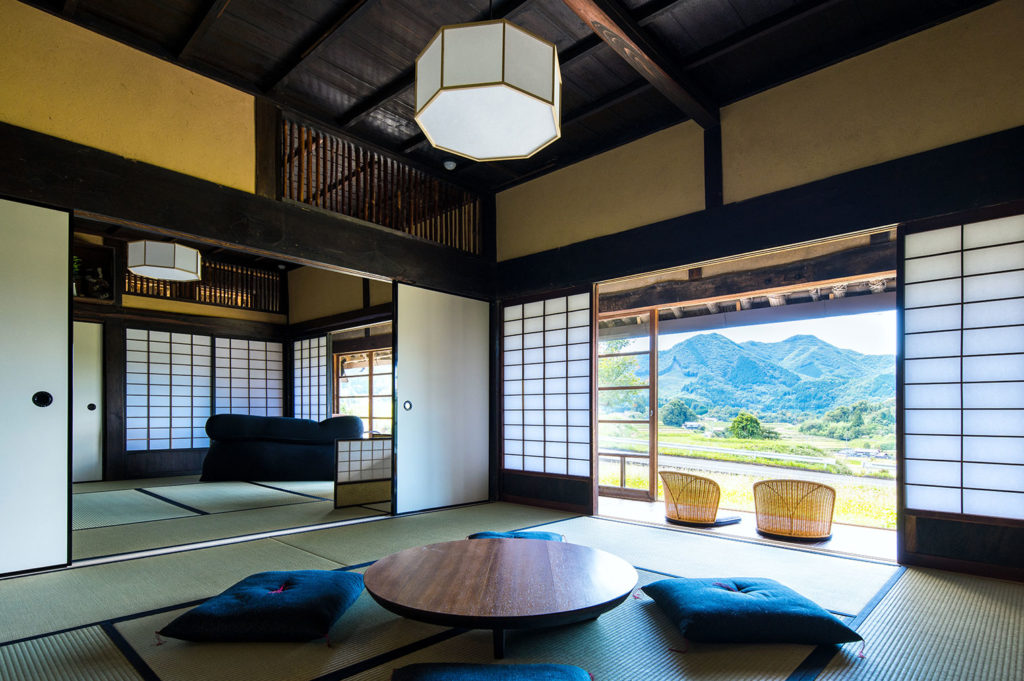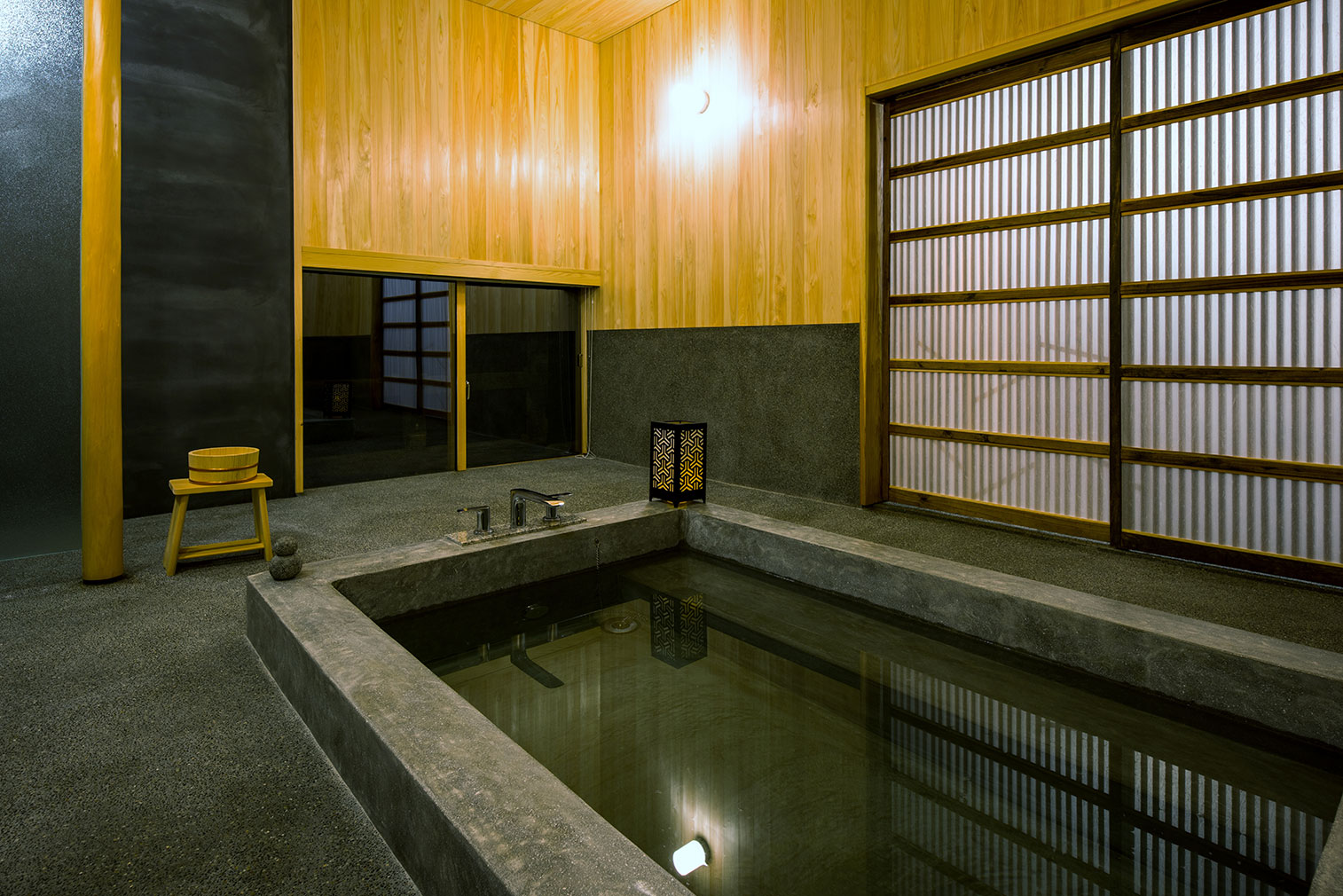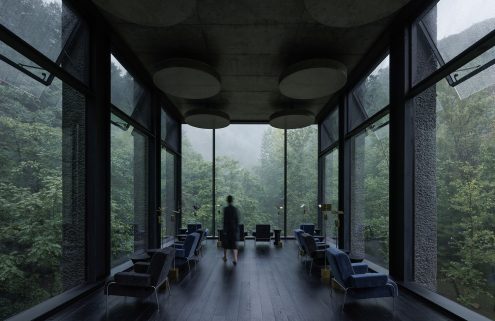
Courtesy Setouchi Cominca Stays

Courtesy Setouchi Cominca Stays

Courtesy Setouchi Cominca Stays

Courtesy Setouchi Cominca Stays

Courtesy Setouchi Cominca Stays
Shobara is said to be the burial place of the goddess Izanami, who, according to legend, created the 700 islands of Japan by stirring the sea between heaven and earth.
Around 50-miles from Hiroshima, the ancient town is home to a collection of 19th-century cominca or ‘old house’-style guesthouses renovated for a new generation of patrons and available to rent via Setouchi Cominca Stays.

They include Chojaya, a 250-year-old thatched farmhouse with a traditional timber frame whose screen doors pull back to reveal lush views of the Hibayama mountains.
Blending old with new, the Japanese holiday home is detailed with artfully concealed modern design elements, including hand-made washi wallpaper and tatami mats and a stone plunge pool which riff on the past. Guests can also feast on seven-course meals prepared by a local chef using seasonal ingredients.

Chojaya is among a cache of remote holiday stays in the Setouchi region, which surrounds the Seto Inland Sea – an area best known for the surreal Naoshima Art Islands.
The historic town of Echiko Ehime Prefecture on the island of Shikoku is also nearby, where a converted miso factory and a machiya or merchant’s house are also available to book.

























